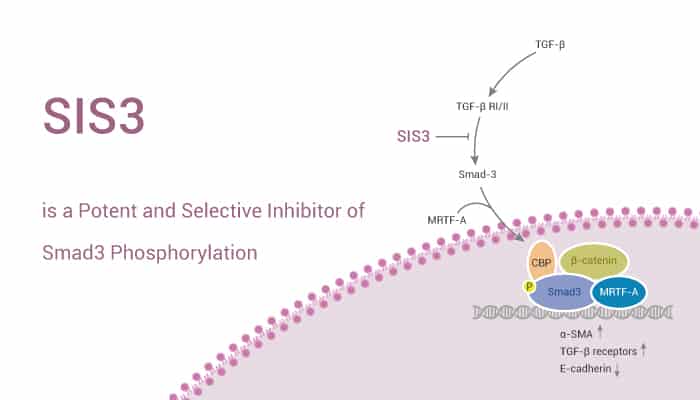Smad contains a series of proteins with similar structures, which are the main signal transducer in transforming growth factors β (TGF-b) superfamily. Specifically, they play an important role in the regulation of cell development and growth. One mechanism of Smads promoting TGF-b-induced cell arrest is down-regulation of Myc, a transcription factor that promotes cell growth. Besides Myc, Smads are also involved in the down-regulation of DNA binding inhibitor (ID) protein. ID is a transcription factor that regulates cell differentiation-related genes, maintains stem cell pluripotency, and promotes a continuous cell cycle. Moreover, Smads are both direct and indirect inhibitors of ID expression.
Furthermore, the TGF-b signal triggers Smad3 phosphorylation and activates ATF3, which is a transcription factor induced during cell stress. Meanwhile, the results show that Smad3 (not Smad2) is an important effect of TGF-b on cell growth. The consumption of endogenous Smad3 through RNA interference is enough to interfere with the cell stagnation of TGF-b. Here, we will introduce a selective inhibitor of Smad3 phosphorylation, SIS3.

SIS3 is a Potent and Selective Inhibitor of Smad3 Phosphorylation.
First of all, SIS3 is a potent and selective inhibitor of Smad3 phosphorylation. Nonetheless, SIS3 inhibits the myofibroblast differentiation of fibroblasts by TGF-β1. Interestingly, SIS3 attenuates the TGF-beta1-induced phosphorylation of Smad3 and the interaction of Smad3 with Smad4. Importantly, SIS3 does not affect the phosphorylation of Smad2.
In the second place, SIS3 eliminated the increased p3TP-lux luciferase activity caused by overexpression of ALK-5 in a dose-dependent manner. Particularly, the addition of SIS3 attenuates TGF by reducing the transcriptional β1 activity. Obviously, SIS3 also inhibits myofibroblast differentiation of fibroblasts through TGF-β1. In addition, SIS3 completely reduced the constitutive phosphorylation of Smad3 and upregulated the expression of type I collagen in scleroderma fibroblasts.
All in all, SIS3 is a potent and selective inhibitor of Smad3 phosphorylation.
References:
Jinnin M, et al. Mol Pharmacol. 2006 Feb;69(2):597-607. Epub 2005 Nov 15.